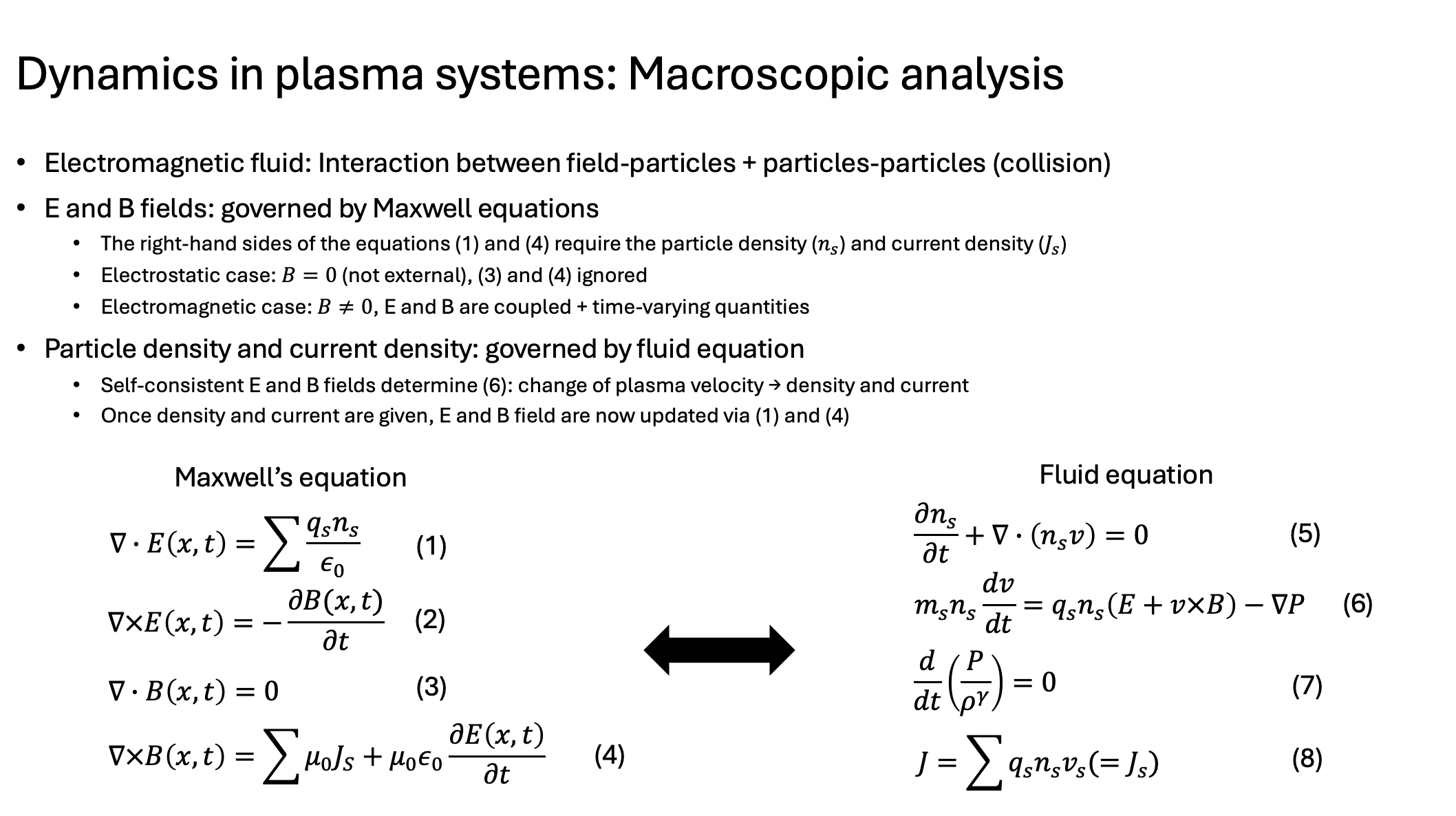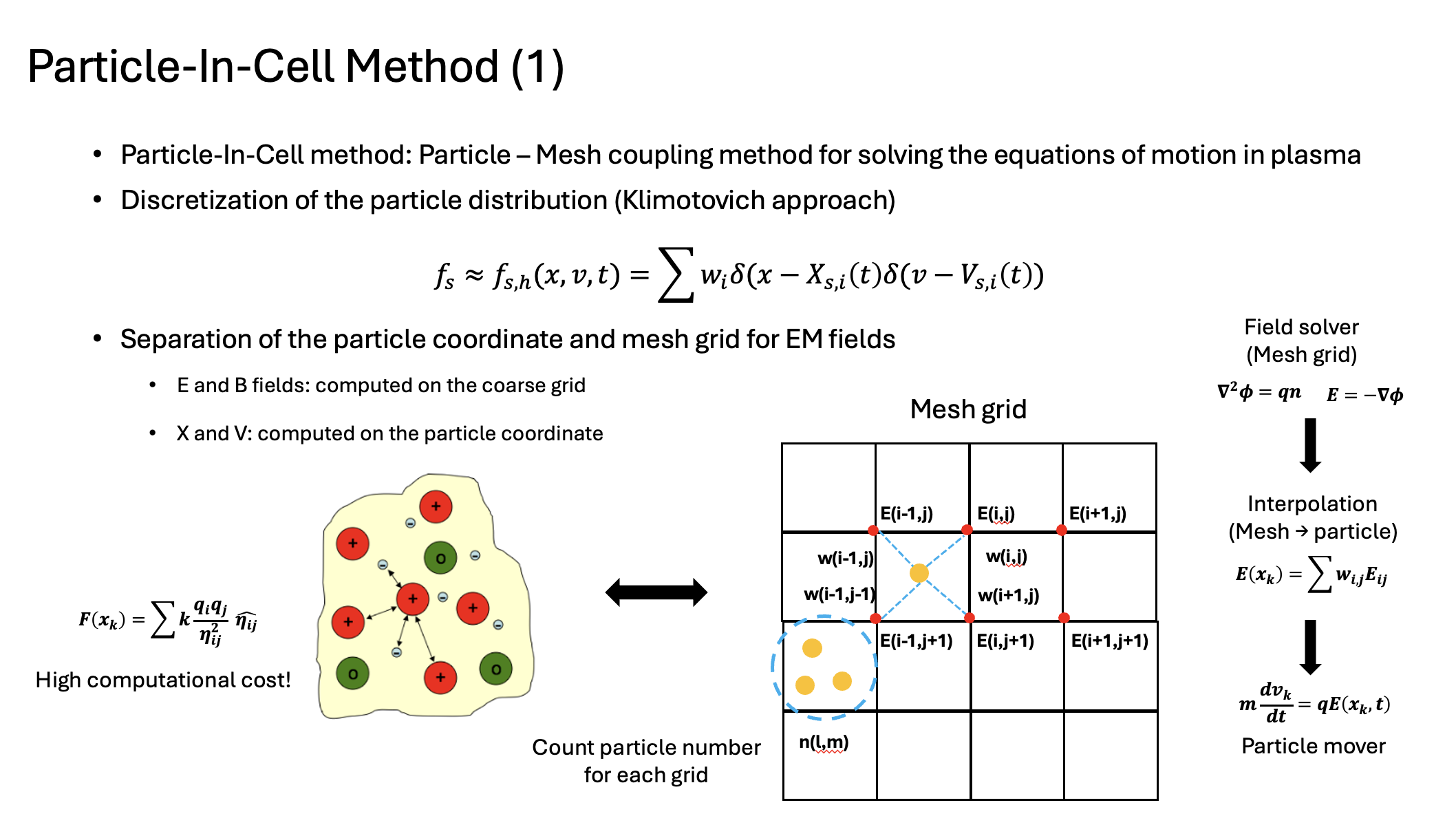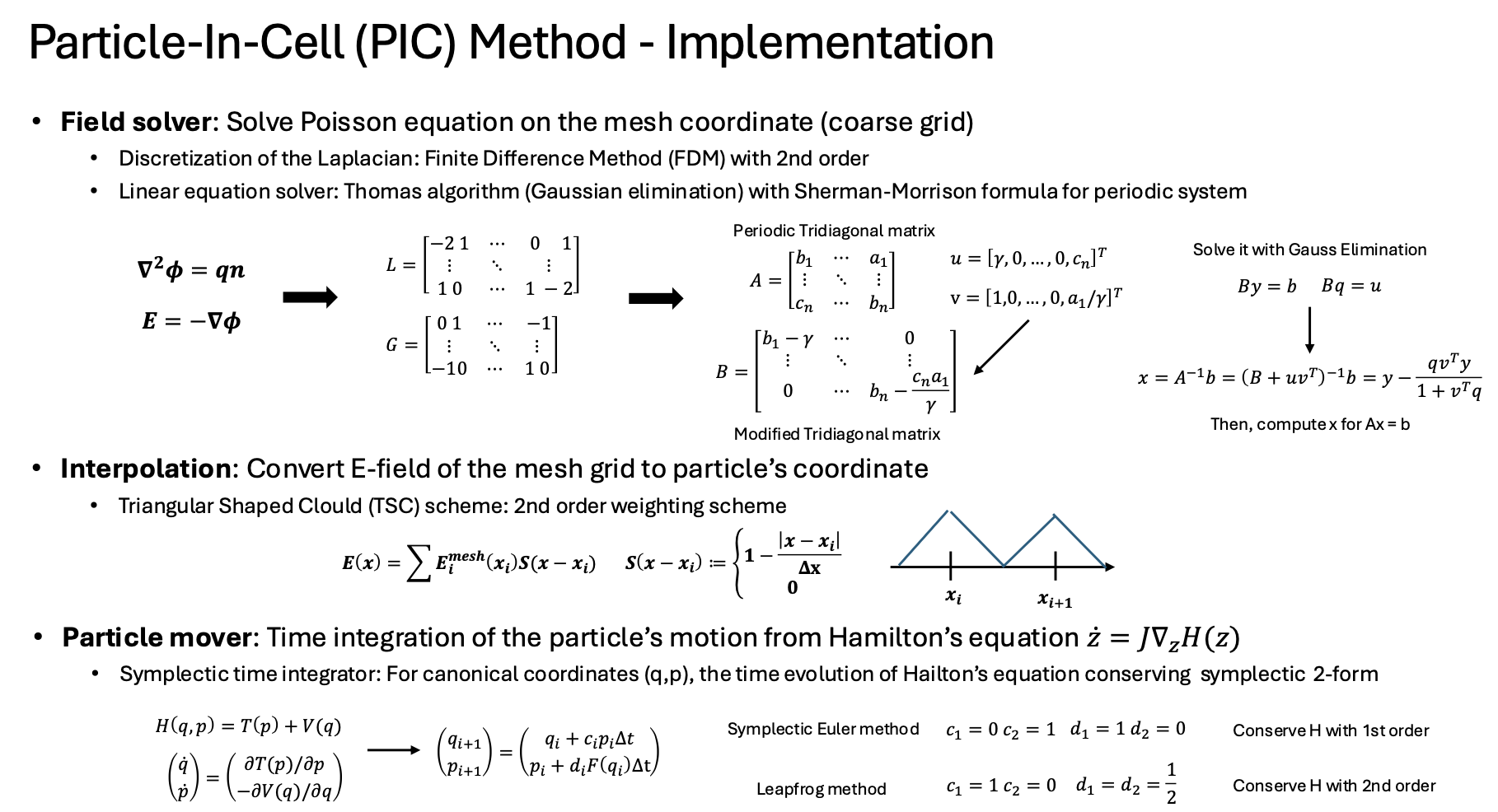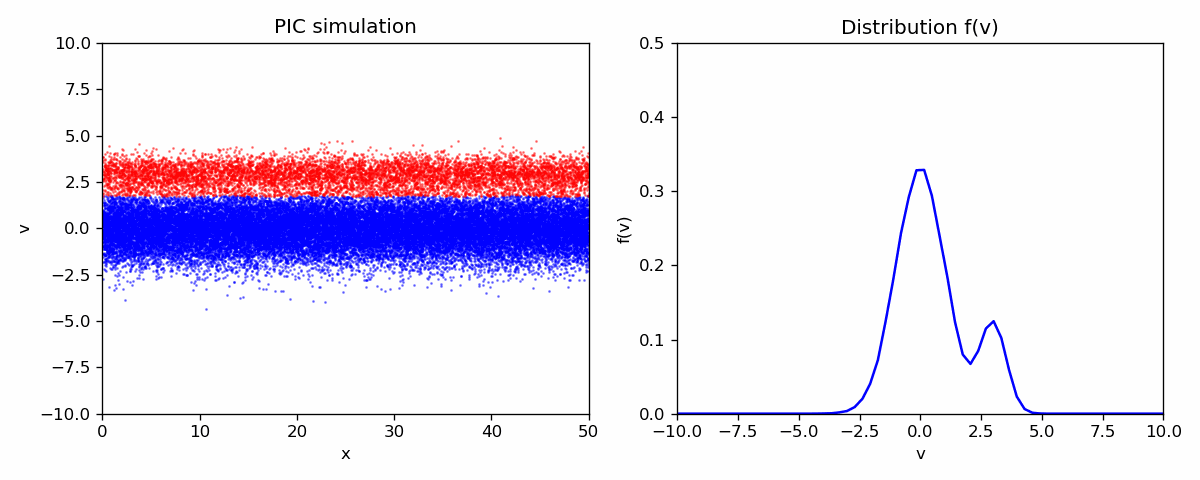Computational Plasma Physics
Introduction
This research implements the symplectic integration with the PIC method to simulate the kinetics of the plasma while preserving the Hamiltonian of the system. We cover a one-dimensional periodic system with an electrostatic plasma, where the effect of the induced magnetic field is ignored. This allows us to cover the one-dimensional Vlasov-Poisson equation, a simplified equation of the Vlasov-Maxwell equation. For small-scale simulations, we consider the electron motions only while the ions are assumed to be fixed. Our numerical experiments are a two-stream instability in which two electron beams in different directions are injected, and a bump-on-tail instability where the high-energy electron perturbation is added in the thermalized electron plasma. The external perturbation applied to the system induces the plasma-wave interaction and results in a shape of a separatrix in a phase-velocity space of the system and reaches a new equilibrium of the velocity distribution where the quasi-linear diffusion can be observed.
Vlasov-Poisson Plasma System
Plasma can be treated as an electric fluid that contains particle interactions (collision) and field-particle interactions. The motion of the plasma induces a change in the distribution of charged particles, which generates electromagnetic fields and affects the motion again. The self-consistent behaviors of the fields and particles can be described by integrating the fluid and Maxwell’s equations, which allows us to understand the dynamics of a continuous medium interacting with fields. Below slide describes the governing equations of the plasma system.

Symplectic Particle In Cell Method
Particle-In-Cell method is a particle-mesh coupling method for solving equations of motion in kinetic systems. The main concept of this method is to separate the particle coordinate and mesh coordinate for electromagnetic fields. While a Lagrangian frame to track the particles in phase space is applied on the particle coordinate, the physical quantities like densities and fields are approximated on a coarse mesh coordinate, which allows the reduction of the computational cost for solving Maxwell’s equations. Below slide describes the concept of PIC.

Note that there is an interpolation process that maps the field computed on the mesh coordinate to the particle coordinate. For each iteration, the field solver calculates E and B on a mesh grid, and the interpolated fields are applied to update the state of the particles. Although PIC is easy to implement and enables a low computational cost for field calculation, the dissipation of the Hamiltonian is a problem since a general explicit time integration method cannot preserve the Hamiltonian structure for a long timescale simulation. Thus, we utilize the symplectic integration known as a 2nd-order Verlet method (Leapfrog). The details for developing the symplectic PIC code are described as below.

Numerical Result
The numerical simulation for the two-stream instability is represented as below and the attached file below. Our code can simulate not only the phase trajectory but also the time-evolving distribution of the particles. The formation of the separtrix with the energy preservation can be observed with different mode numbers.

You can see the details at the attached files.
Article
Jinsu Kim. “Symplectic Particle-In-Cell Method for 1-Dimensional Vlasov-Poisson Plasma System” Draft.
